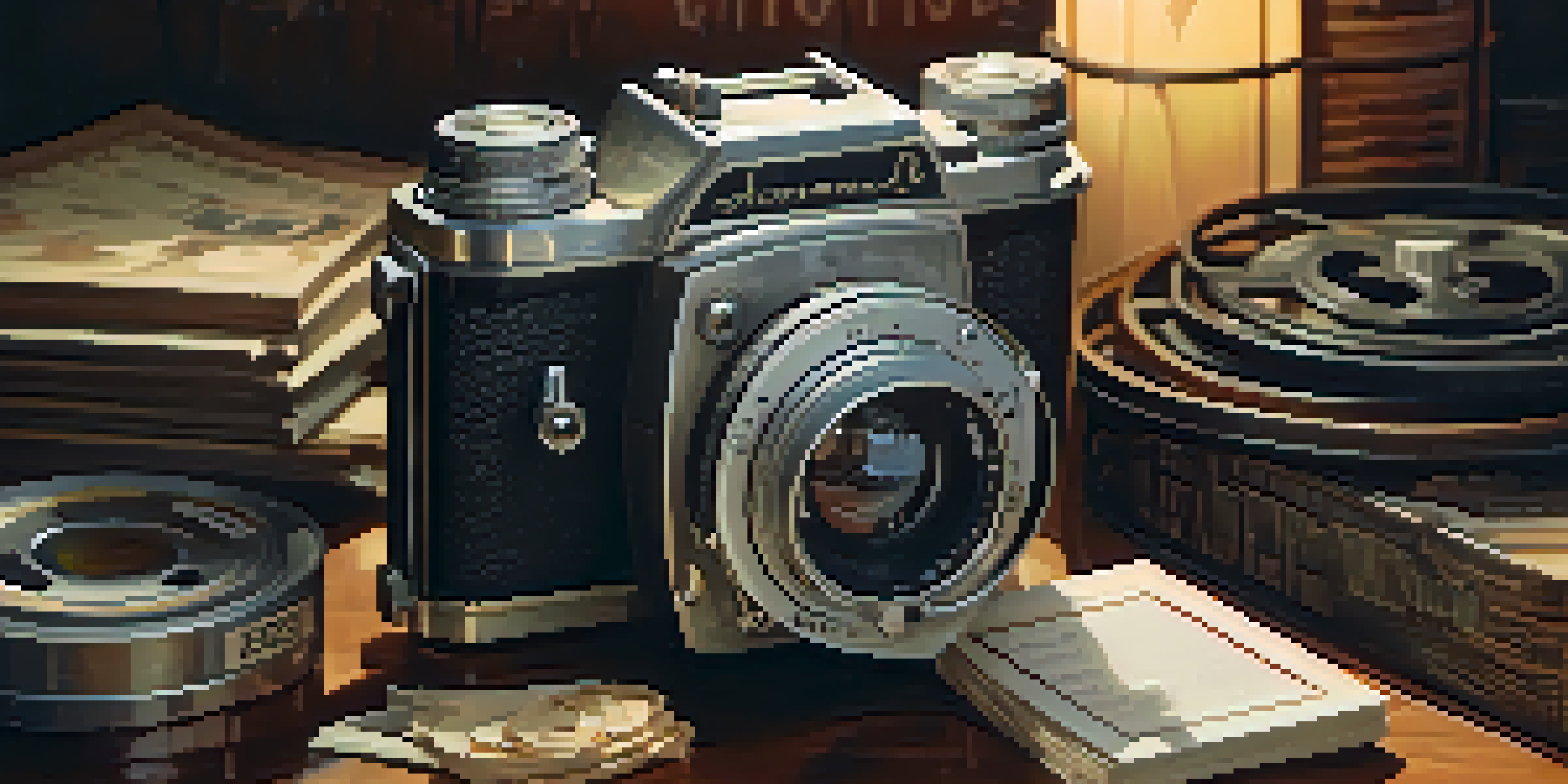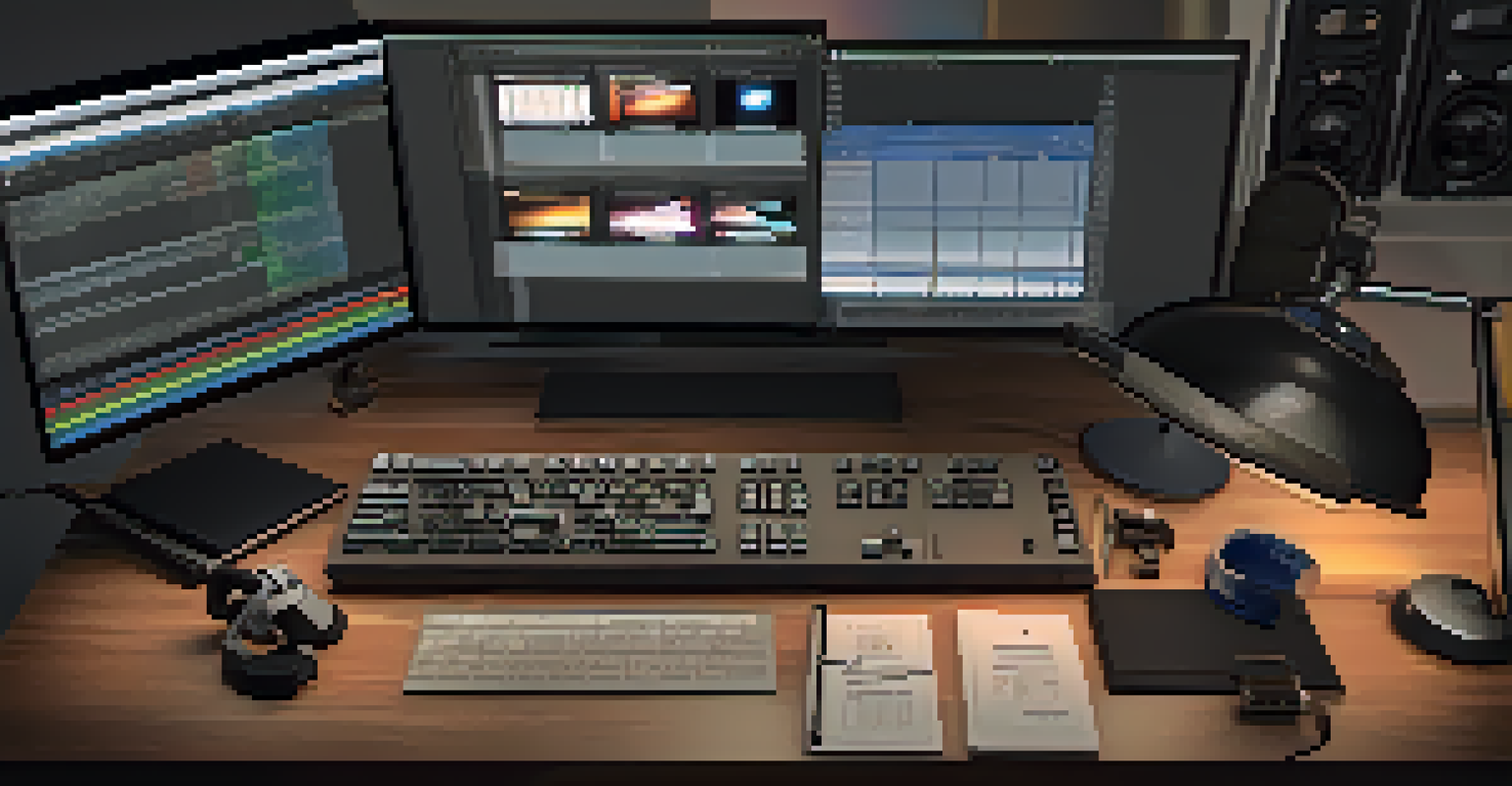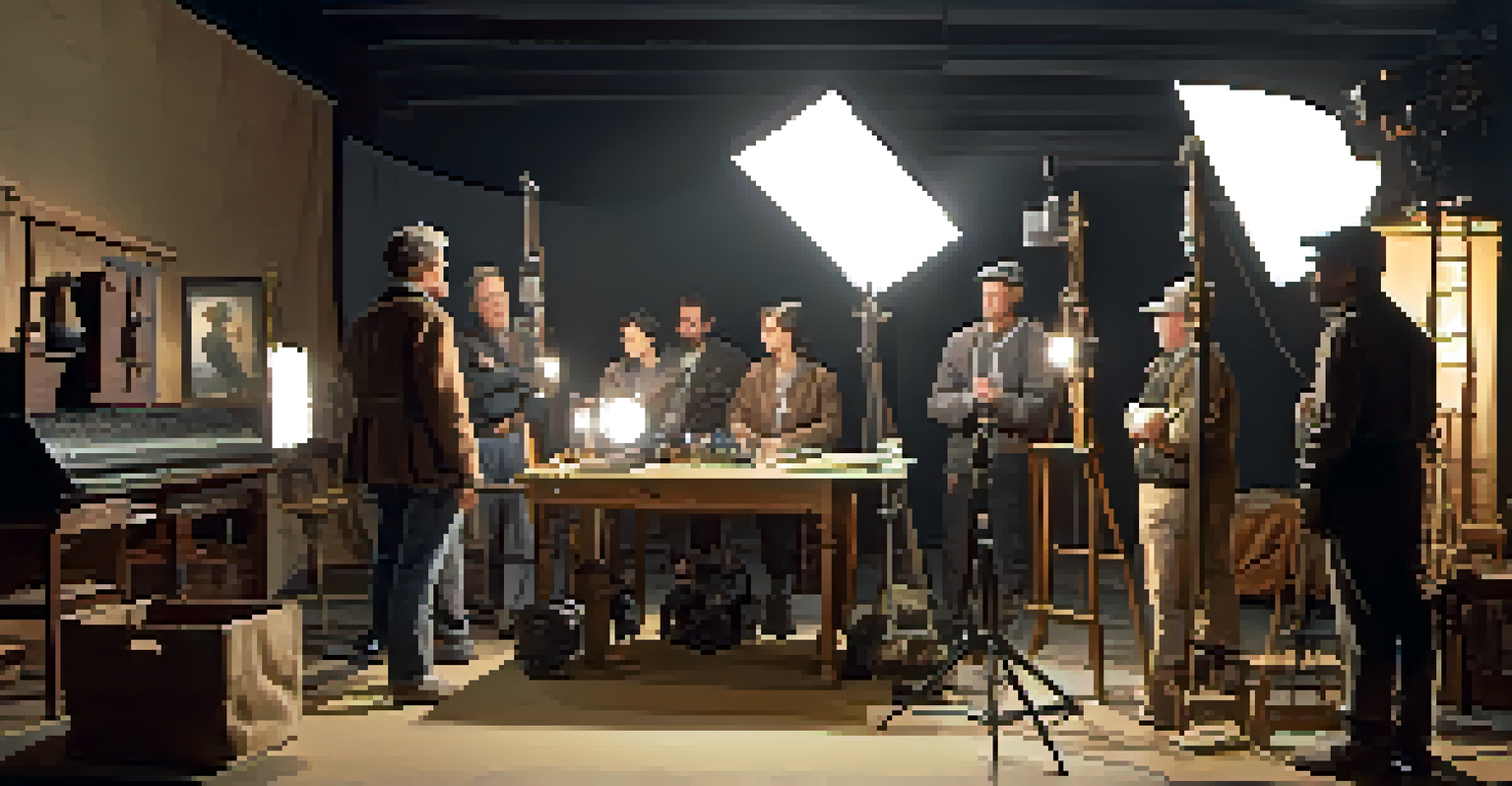Analyzing Film through a Formalist Lens: Key Techniques

Understanding the Formalist Approach to Film Analysis
Formalist film analysis focuses on the elements of cinema itself, such as narrative structure, cinematography, and editing. By examining these components, viewers can gain a deeper understanding of how they contribute to the overall experience of the film. This approach encourages us to look beyond the plot and characters, diving into the mechanics that shape a film's meaning.
Film is a very powerful medium for conveying messages and emotions, and it is essential to understand its language to appreciate its art.
For instance, consider how a film’s pacing affects the audience's emotional response. A slow build-up can create tension, while rapid cuts might evoke excitement. Understanding these techniques helps us appreciate the filmmaker's craft more fully and recognize the intentional choices that shape our viewing experience.
Ultimately, adopting a formalist lens allows us to dissect films in a systematic way, enhancing our appreciation for the artistry involved. It shifts our focus from merely what the story is to how it is told, revealing the intricate layers that make cinema a unique storytelling medium.
The Role of Cinematography in Formalist Analysis
Cinematography is a crucial aspect of film that shapes how we perceive a story. It encompasses everything from camera angles and movement to lighting and color. By analyzing these elements, we can uncover how they influence our emotional engagement with the film and enhance its thematic depth.

For example, a low-angle shot can make a character appear powerful and dominant, while a high-angle shot might evoke vulnerability or weakness. Similarly, the use of color can signify mood or foreshadow events. These visual choices are not arbitrary; they serve a purpose and contribute to the film's overall message.
Formalist Analysis Enhances Viewing
Adopting a formalist approach allows viewers to focus on the cinematic elements that shape a film's meaning beyond just the story and characters.
By paying attention to cinematography, we can appreciate the visual language of film. This understanding enriches our viewing experience, allowing us to connect more deeply with the story and its characters. It’s like learning a new dialect of storytelling that transcends words.
Editing Techniques and Their Impact on Narrative
Editing is another vital technique in formalist film analysis, as it determines the rhythm and flow of the narrative. The way scenes are cut and arranged can drastically alter the viewer’s perception and emotional response. For instance, a montage may compress time and suggest a passage of days or years, while a long take can create a sense of real-time immersion.
The camera is a instrument that teaches people how to see without a camera.
Consider how the quick cuts in an action sequence heighten tension and excitement. In contrast, slower edits can allow for reflection and emotional depth. By analyzing these editing choices, we can gain insights into how the film manipulates time and space to serve its narrative goals.
Ultimately, understanding editing techniques reveals how filmmakers control the pacing and rhythm of their stories. This awareness enhances our appreciation of their storytelling mastery, making us more discerning viewers.
The Importance of Sound Design in Film Analysis
Sound design is often an overlooked aspect of film analysis, yet it plays a pivotal role in shaping the viewer's experience. From dialogue and sound effects to music and silence, sound elements significantly contribute to the emotional landscape of a film. A well-crafted sound design can evoke feelings, create tension, and even signal character motivations.
For example, the use of dissonant music can heighten suspense, while silence can create moments of reflection or dread. By analyzing how sound interacts with visuals, we can uncover layers of meaning that might otherwise go unnoticed. It’s akin to the way a soundtrack can enhance a scene's emotional impact in our favorite movies.
Cinematography Influences Emotion
Cinematography, through techniques like camera angles and color choices, plays a crucial role in shaping viewer engagement and emotional responses.
By paying attention to sound design, we engage with the film on a more profound level. This understanding allows us to appreciate how sound and visuals work in harmony to create a cohesive narrative experience.
Symbolism and Motifs in Formalist Film Analysis
Symbolism and motifs are essential tools in formalist analysis, as they enrich the narrative and deepen our understanding of the film's themes. A motif is a recurring element that holds significance, while symbolism involves the use of objects or actions to represent larger concepts. Analyzing these elements can reveal the filmmaker's intentions and the underlying messages in the story.
For instance, a character's journey might be symbolized by a recurring image, like a broken mirror representing fractured identity. By recognizing these symbols and motifs, we can gain insights into the emotional and thematic layers of the film. This process transforms our viewing experience, making it more engaging and thought-provoking.
Ultimately, exploring symbolism and motifs encourages us to think critically about what we see on screen. It invites us to connect the dots between individual elements and the film’s broader commentary on society, relationships, and the human condition.
The Significance of Genre in Film Analysis
Genre plays a vital role in formalist film analysis, as it sets expectations for the narrative style, themes, and emotional tone. Each genre comes with its conventions and tropes, which filmmakers can either adhere to or subvert. By analyzing how these conventions are employed or challenged, we can gain a deeper understanding of the film's intent and its commentary on the genre itself.
For example, a horror film might use dark lighting and eerie sound design to create suspense, while a romantic comedy might rely on lighthearted dialogue and upbeat music. Recognizing these genre-specific elements allows us to appreciate how filmmakers navigate and manipulate audience expectations.
Contextual Factors Enrich Analysis
Understanding a film's cultural and historical context adds depth to our analysis by revealing the societal influences reflected in its narrative and themes.
Ultimately, studying genre enriches our viewing experience by providing context for the film’s choices. It encourages us to consider how genres influence storytelling and how films can innovate within or against traditional frameworks.
Contextualizing Film within Its Cultural and Historical Framework
To fully appreciate a film through a formalist lens, it’s important to consider its cultural and historical context. This analysis helps us understand the influences that shape the narrative, themes, and stylistic choices. By examining the time and place a film was made, we can uncover layers of meaning that reflect societal values, fears, and aspirations.
For instance, a film produced during a specific political era may echo the tensions of that time through its characters and plot. Understanding these contextual factors allows us to see the film as a reflection of its environment, making our analysis richer and more nuanced.

Ultimately, situating a film within its cultural and historical framework enhances our overall understanding and appreciation. It helps us recognize the dialogue between the film and its audience, revealing how cinema serves as both a mirror and a commentary on society.